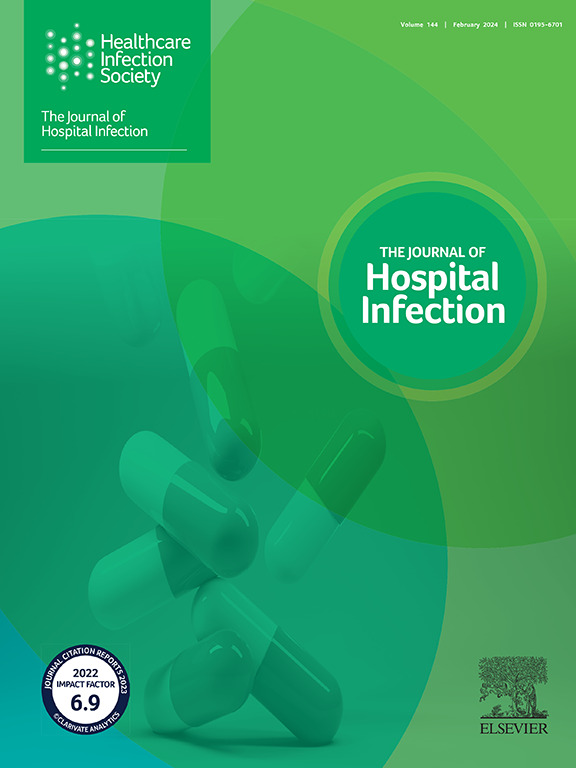一次性内窥镜减少持久性微生物污染的有效性和安全性:与可重复使用内窥镜技术性能比较的系统综述和荟萃分析。
IF 3.1
3区 医学
Q1 INFECTIOUS DISEASES
引用次数: 0
摘要
背景:内窥镜在诊断和治疗中是必不可少的,但尽管严格清洁,可重复使用的内窥镜仍存在污染风险。一次性内窥镜可以降低这种风险。本系统综述和荟萃分析评估了与可重复使用内窥镜相比,它们在减少微生物污染方面的有效性。方法:我们检索PubMed、Web of Science和Scopus,检索截止到2024年3月1日的队列、病例对照和随机对照试验,比较可重复使用和一次性内窥镜在性能和污染方面的差异。数据分析采用平均差值和95% CI的风险比。采用LFK指数评价发表偏倚,采用I2和Cochran’s Q检验评价异质性。结果:本荟萃分析包括15项研究;2571名参与者使用一次性内窥镜,5607名参与者使用可重复使用的内窥镜。后者的并发症风险高出25% (RR:1.25, 95% CI:1.08—1.44)。一次性用药组发热发生率明显低于一次性用药组(RR:0.38, 95% CI: 0.20—0.72)。住院时间方面无显著差异(MD:-0.14, 95% CI: -0.39-0.11)。尿培养阳性(RR:1.93, 95% CI: 0.03-123.15)或尿脓毒症发生率(RR:0.45, 95% CI:0.16-1.27)未显示出显著差异。结论:与可重复使用的内窥镜相比,一次性内窥镜明显降低了发热风险。然而,尿脓毒症发生率、阳性尿培养和住院时间没有差异。建议考虑成本和环境影响。临床解释和建议:我们的研究结果表明,与可重复使用的设备相比,一次性内窥镜可以降低轻微感染和并发症(包括发烧)的风险。然而,由于研究有限、异质性和可能的发表偏倚,这些结果应谨慎解释。严重并发症和住院时间无显著差异。内窥镜使用的决定不仅应考虑临床结果,还应考虑诸如成本效益、病例量和灭菌能力等机构因素。高容量中心可能出于经济原因青睐可重复使用材料,而一次性材料可能通过减少再处理风险而适合小容量或资源不足的环境。在现有证据和设施能力的指导下,患者安全仍应是关键优先事项。总之,尽管一次性内窥镜为感染控制提供了一种有希望的替代方案,并可能有助于减少某些轻微并发症,但它们的广泛采用需要一种细致入微的方法。未来的研究应侧重于大规模、设计良好的研究,具有统一的结果报告、更长的随访期和全面的环境和经济分析,为全球临床实践和医疗保健政策提供更明确的指导。本文章由计算机程序翻译,如有差异,请以英文原文为准。
The efficacy and safety of disposable endoscopes in reducing persistent microbial contamination: a systematic review and meta-analysis comparing technical performance with reusable endoscopes
Background
Endoscopy is essential for diagnosis and treatment, but reusable endoscopes pose contamination risks despite strict cleaning. Disposable endoscopes may reduce this risk.
Aim
To evaluate the effectiveness of disposable endoscopes in minimizing microbial contamination compared to reusable endoscopes.
Methods
In this systematic review and meta-analysis, PubMed, Web of Science, and Scopus were searched up to March 1st, 2024, for cohort, case–control, and randomized controlled trials comparing reusable and disposable endoscopes in terms of performance and contamination. Data were analysed using mean difference (MD) and risk ratio (RR) with 95% confidence interval (CI). Publication bias was assessed using the Luis Furuya-Kanamori (LFK) index, and heterogeneity was evaluated with I2 and Cochran's Q test.
Findings
This meta-analysis included 15 studies; disposable endoscopes were used by 2571 participants, reusable ones by 5607. The latter was found to have a 25% higher complication risk (RR: 1.25; 95% CI: 1.08–1.44). The fever incidence was much lower in the disposable group (RR: 0.38; 95% CI: 0.20–0.72). No meaningful differences were found in the hospital stay (MD: –0.14; 95% CI: –0.39 to 0.11). Significant differences were not shown by positive urine cultures (RR: 1.93; 95% CI: 0.03–123.15) or urosepsis rates (RR: 0.45; 95% CI: 0.16–1.27).
Conclusion
Disposable endoscopes have notably reduced fever risk in comparison to reusable ones. However, urosepsis rates, positive urine cultures, and hospital stay showed no differences. Consideration of cost and environmental impact is recommended.
求助全文
通过发布文献求助,成功后即可免费获取论文全文。
去求助
来源期刊

Journal of Hospital Infection
医学-传染病学
CiteScore
12.70
自引率
5.80%
发文量
271
审稿时长
19 days
期刊介绍:
The Journal of Hospital Infection is the editorially independent scientific publication of the Healthcare Infection Society. The aim of the Journal is to publish high quality research and information relating to infection prevention and control that is relevant to an international audience.
The Journal welcomes submissions that relate to all aspects of infection prevention and control in healthcare settings. This includes submissions that:
provide new insight into the epidemiology, surveillance, or prevention and control of healthcare-associated infections and antimicrobial resistance in healthcare settings;
provide new insight into cleaning, disinfection and decontamination;
provide new insight into the design of healthcare premises;
describe novel aspects of outbreaks of infection;
throw light on techniques for effective antimicrobial stewardship;
describe novel techniques (laboratory-based or point of care) for the detection of infection or antimicrobial resistance in the healthcare setting, particularly if these can be used to facilitate infection prevention and control;
improve understanding of the motivations of safe healthcare behaviour, or describe techniques for achieving behavioural and cultural change;
improve understanding of the use of IT systems in infection surveillance and prevention and control.
 求助内容:
求助内容: 应助结果提醒方式:
应助结果提醒方式:


